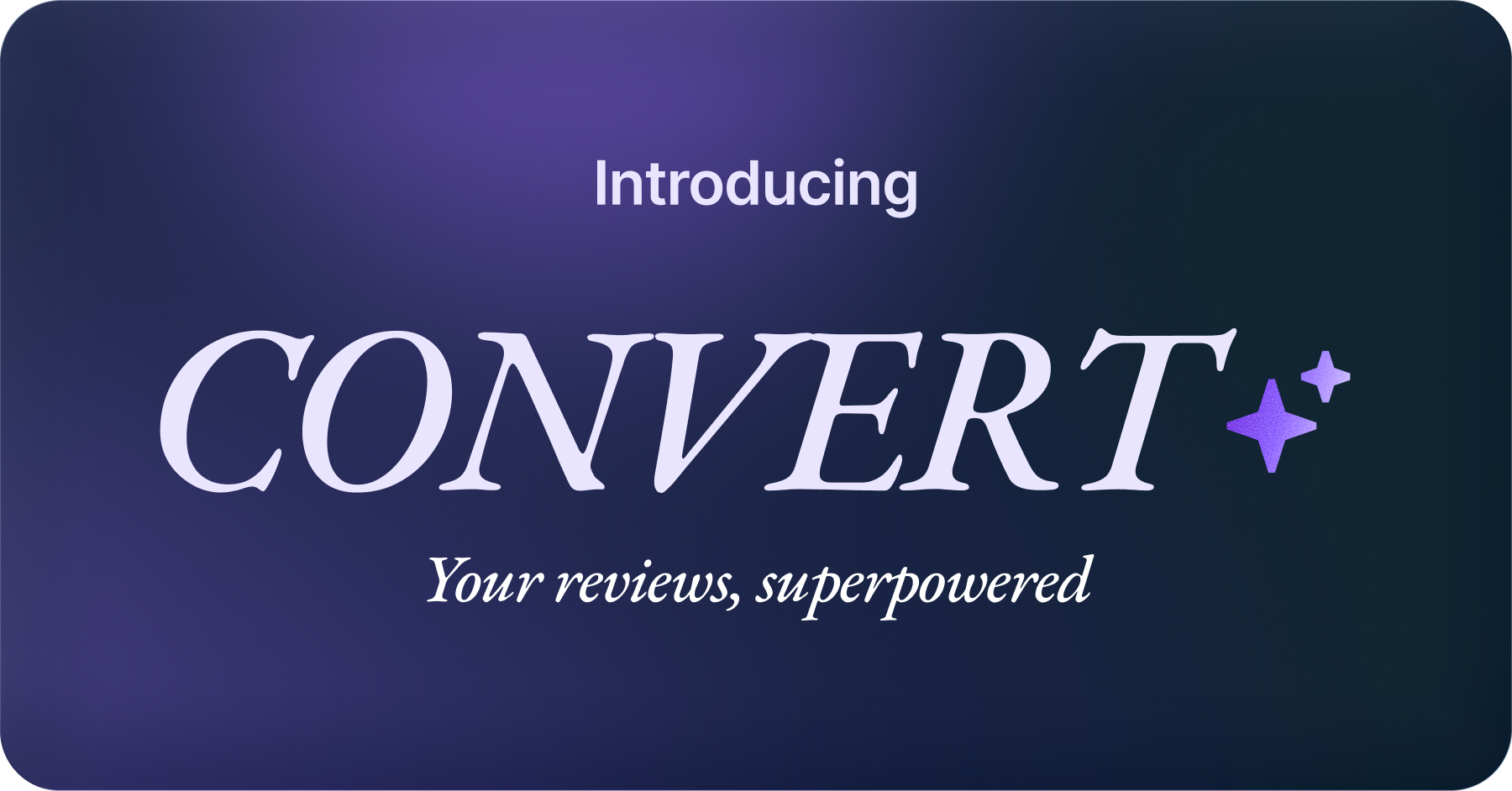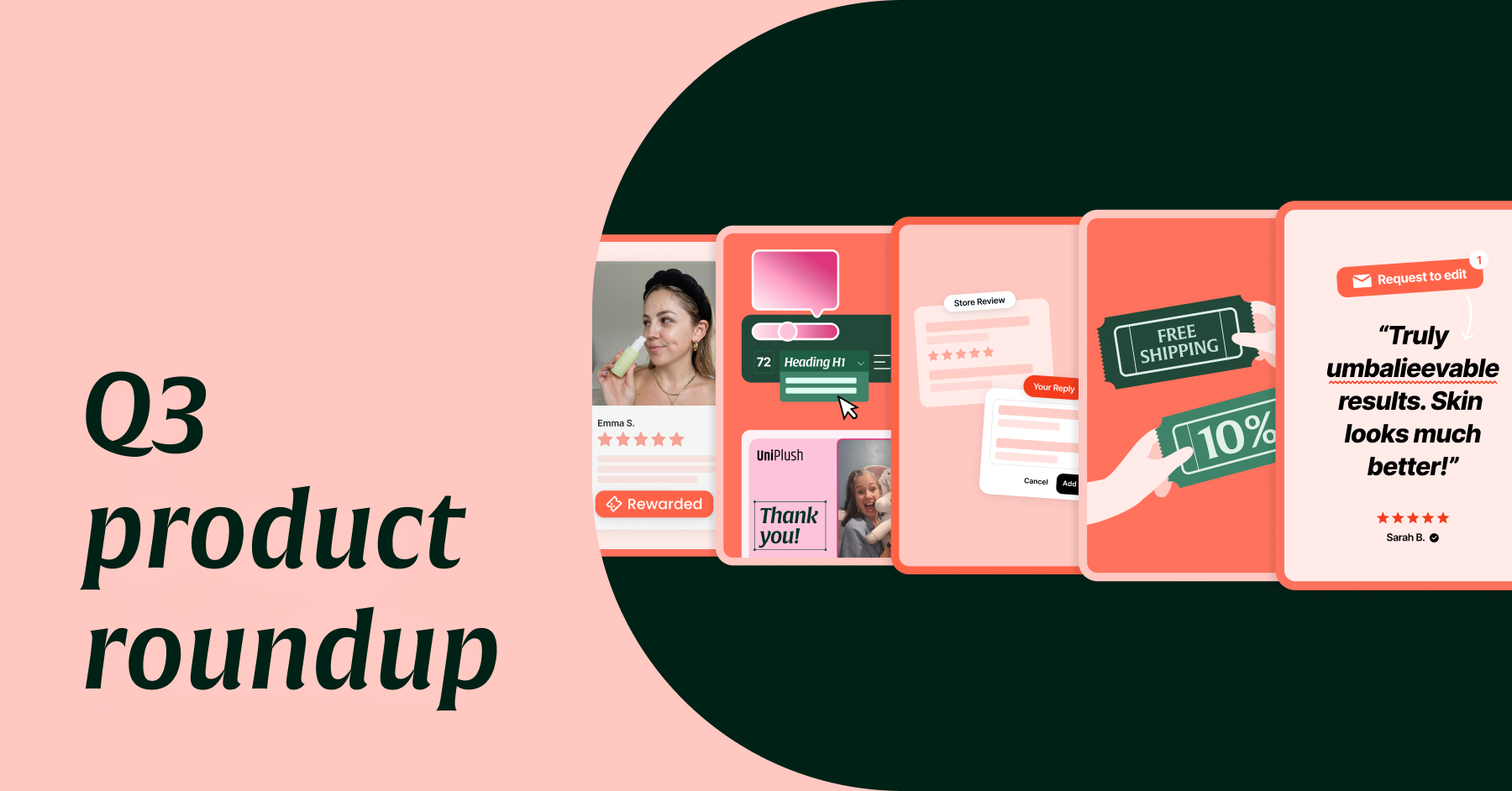5-Step Roadmap to Ecommerce Success

In a 2005 commencement address at Stanford University, Steve Jobs uttered his famous line that has been echoed countless times in the ~17 years since.
Even if your college days are long behind you, you can probably relate to this.
The modern ecommerce landscape is a confusing mess right now.
In 2023 and beyond, brand owners and operators across every industry will need to deal all of these factors and more:

Connecting the dots looking forward? It’s not easy.
But with this incredible complexity comes equally incredible opportunity.
The future is uncertain. It’s difficult to know what the world will look like even 12 months from now - but that’s okay.
The obstacles which lie ahead can all be overcome. As long as you can view those challenges through the right lens, you can handle anything that comes your way.
That’s why we’ve identified a five-part framework that you can use to do this.
At a high level, here’s what your path ahead looks like:

In this series, we’re going to dive into each of these phases in detail.
Today, we're excited to give you an overview of what's to come in the next few weeks!
By the time you’re done reading these pieces, you’ll:
- Know where you are on the path
- Understand what your core focus should be
- Be equipped with a flexible - yet detailed - framework to troubleshoot any obstacles you encounter along the way
- Possess the knowledge you need to achieve your goals as quickly and painlessly as possible
Phase 1 - Making Your First Sale

Every entrepreneurial journey starts out in the same way: with an idea.
Part of the reason why Shopify is so popular is that they dramatically reduce the friction of launching your brand online.
The technological barrier to entry has never been lower. You don’t need tons of capital or specialized knowledge to get over this hurdle anymore. And that’s fantastic! But with this opportunity comes new problems.
The most significant challenge that aspiring entrepreneurs face these days isn’t technology - it’s psychology.
We live in an age where endless opportunity abounds.
Billion-dollar companies compete for our attention with algorithms designed to keep our eyes glued to our screens.
Marketing messages wash over us from every angle, promising us an easier/faster/better/more enjoyable life if we just buy whatever they’re selling.
Success (the appearance of it, at least) fills our social feeds.
People we see as no smarter or better than us are achieving everything we want to achieve.
The rich and famous are in reach.
And we feel as if we’re constantly falling behind.
Opportunity is everywhere. But when our attention is fully occupied with visions of what could be, we never even get started.
Until you make your first sale, your dream to build a successful ecommerce business is just that - a dream.
During this phase of the journey, your focus needs to be getting from zero to one as quickly as possible.
This is what gets you on the starting line. And this is what gets you to the real race, which begins in Phase 2.
Phase 2 - Building a Sustainable Side Hustle

Congratulations are in order!
You’ve made it past a hurdle that 95% of people will never overcome.
You’ve proven that your business is valuable to at least one person. This is bigger than you think.

The next challenge to conquer?
Turning your business from a one-hit wonder into a sustainable side hustle.
The definition of “side hustle” will vary from person to person. For our purposes, we’re going to define it very simply:
As long as this business is not your “main thing”, it’s a side hustle.
During this phase of your journey, your focus shifts from getting started, to making serious forward progress.
There are countless problems that you’re going to have to solve as you grow your business. Some of these problems won’t kick in until you’re further down the path, but a lot of them will begin to impact you even at this early stage.
The stronger the foundation you build during this phase, the easier a time you’ll have moving through the others.
Learning how to present yourself credibly, getting offers in front of more prospects, and nurturing whatever relationships you can build: all of these and more are the fundamentals you’ll dial in on during this part of the journey.
Because you’re building your brand on the side (which is usually done by large teams), you don’t have as much time to focus on it as someone further along the path. With that in mind, you’ll have to maximize your efficiency to get as much value from your available resources as possible.
Once you reach a point where:
- You’re generating a steady stream of sales
- You have a small (but growing) list of customers and followers
- You’re making enough money to create at least some profit
You’ll be ready to move onto Phase 3.
Phase 3 - Taking It Full-Time

At this point in your journey, things are going well. In fact, things are going very well.
You took it from a side-hustle to a real business.
But make no mistake: there’s a gap between having a profitable side hustle, and having a business that you can focus on full-time.
The types of challenges you’ll encounter while moving through this leg of the journey are a bit different to what you’ve faced before.
Stuff that you never had to worry about before will start to become serious obstacles:
- Managing inventory through seasonal fluctuations and mitigating supply chain disruption.
- Increasing net margins so you can scale up ad spend to reach more customers + grow topline revenues.
- Maintaining market share as competitors start to take notice of your brand & make moves to steal your customers.
The challenging part of this phase?
You might need to grow the business a lot bigger than you’d think to be able to focus on it full-time - even as a solo operator.
Here’s why:
Net margins for ecommerce businesses can vary from industry to industry, but most fall in the 5-15% range.
Assuming that you could get by on $30k/year, you would need to turn over between $200,000-$600,000 in revenue to sustain yourself.
That’s mid-six figures in annual revenue just to support one person.
Some rough figures, just for reference:

(Note: the numbers above are rounded and don’t include taxes.)
Simply put: growing your business from a nice side income to something you can live off of is easier said than done.
Success in this phase will require you to optimize customer lifetime value, build brand equity, and find innovative ways to build your buyer list (without burning a hole in your pocket).
Once you’ve built your brand to the point where you can comfortably live off your profits - and still have enough left over to reinvest in the business - you’ll be ready to move onto Phase 4.
Phase 4 - Scaling Your Team

If you’ve managed to grow your business large enough to support yourself full-time, give yourself a pat on the back: this is a fantastic achievement!
While you may not be on the cover of Forbes or giving keynotes at Shopify headquarters just yet, the reality is that you’ve managed to do something most people can only dream of.
If you’ve come this far along the path, you’re probably starting to realize - entrepreneurship can be lonely when it’s a single-player game.
Running the entire business yourself - handling customer support, fulfilling orders, paying taxes, sourcing suppliers, developing new products, updating your website - is challenging.
As a startup entrepreneur, you’re used to working hard. But during this phase, it’s not just about how hard you can work anymore…
It’s about building a team you can collaborate with to bring your business to new heights.
Ecommerce entrepreneurs will usually focus on outsourcing any mission-critical tasks that they’re not qualified to do first. Stuff like legal issues, accounting, taxes and so on.
Next, they’ll hire someone to take care of the time-consuming tasks that they don’t enjoy or aren’t good at. Graphic design, customer support, coding: items like these are often delegated as soon as they can be.
Where the business goes from here depends on the entrepreneur’s skillset. If they have high-level skills in some specific aspect of the business (e.g. organic distribution, product development), they’ll usually double down and focus more of their time in this area.
If they’re more of a generalist, they might instead choose to focus on architecting the brand’s vision. If that’s the case, they might need to get more people in place to help with the “functional” tasks - and they may even need a general manager to help with day-to-day operations.
Progression to the end of this phase depends on how far you want to go.
If all you need to do is hire an assistant so you can cut your working time down to 3 days per week (but still do everything else yourself), that’s one thing. If you want to acquire 5,000 new customers a month and dominate your space… that will require a very different approach.
In any case:
Once you’ve built your business to the point where it can support you + a large enough team to achieve your goals, it’s time to look at Phase 5.
Phase 5 - Achieving Freedom

By the time you reach Phase 5, you’ve covered a lot of ground.
With these four milestones conquered, there’s just one piece of the puzzle left to solve:
Achieving freedom.
This freedom comes in one of two main forms:
- Freedom from day-to-day operations for your business, letting you focus 100% on creating the vision that your team will align around
- Freedom from the business entirely - allowing you to potentially sell it at a high multiple, or maintain ownership of it for cashflow reasons
As we discussed earlier in this piece (back in Phase 3), building a business that can afford to support you + other team members is a significant challenge. (And depending on your preferences, you might not even want to grow past this point!)
If that’s true, then that’s totally okay. How you choose to walk this path is 100% up to you.
Likewise, don’t feel as if you “have” to take yourself out of the day-to-day operations of the business.
While there’s value in freeing up your time to focus on the stuff that matters…
Ultimately, it’s important that you do whatever you want to do.
Whatever choice you make, know that freedom is a valuable asset.
Freedom is not exclusively reserved for seven, eight, or nine-figure brands - it’s more about structure than size. And if you’ve come this far along the path, there’s nothing stopping you from attaining it.
You’ll know you’ve achieved this milestone when you no longer “have” to do anything to keep things running (even if you decide to take a month-long holiday).
That’s how you create a business that can stand the test of time.
Conclusion
As you progress along your path, you’re going to encounter hardship. There will be times when you feel like giving up - and there’s no guarantee that any single specific action you take will pan out.
But you don’t need those guarantees.
When you learn to view your experiences through the lens of “being on a journey”, everything changes.
Rather than thinking your final destination is just around the corner, you can zoom out and see things in context.
Instead of feeling as if you’re not making any progress, you can see how much ground you’ve gained and celebrate your wins.
We’re here to help you score those victories.
Over the next few weeks, we’re going to be publishing five more installments in this series. Each of these articles will cover a different phase of this journey in detail.



.jpg)
